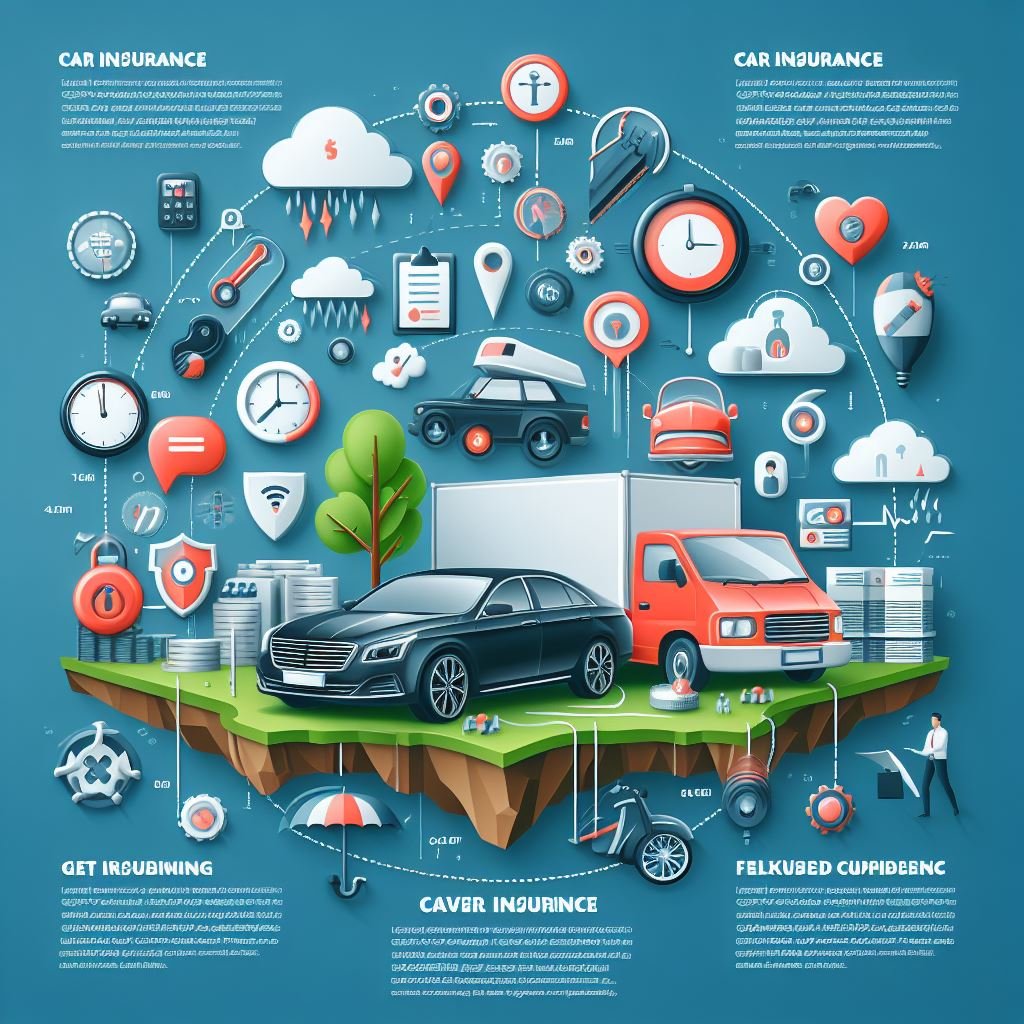Navigating the world of car insurance can feel like steering through a dense fog. Confusing terms, countless options, and varying costs make the process overwhelming. But worry not! This guide is here to help you drive through the confusion and find clarity. By the end, you’ll be ready to choose the right car insurance with confidence.
Understanding Car Insurance Basics
Car insurance is a contract between you and an insurance company. You pay a premium, and in return, the company covers certain expenses in the event of an accident or other vehicle-related issues. Here are the primary types of coverage:
- Liability Insurance: Covers damage to other people and their property if you’re at fault in an accident.
- Collision Insurance: Pays for repairs to your own car after an accident, regardless of fault.
- Comprehensive Insurance: Covers non-collision-related damage, like theft, fire, or natural disasters.
- Personal Injury Protection (PIP): Pays for medical expenses for you and your passengers, regardless of fault.
- Uninsured/Underinsured Motorist Coverage: Protects you if you’re hit by a driver with little or no insurance.

Why Do You Need Car Insurance?
Car insurance isn’t just a legal requirement; it’s a financial safety net. Without it, you might face hefty bills for repairs, medical expenses, or legal fees. Imagine having to pay out-of-pocket for a new car or a hospital stay. Car insurance helps avoid such financial burdens.
Choosing the Right Car Insurance Policy
Selecting the right policy involves understanding your needs and comparing options. Here’s a step-by-step guide:
- Assess Your Needs: Consider your car’s value, your driving habits, and your financial situation. Do you need full coverage, or is liability insurance enough?
- Research Providers: Look for reputable insurance companies. Check reviews and ratings to gauge customer satisfaction.
- Compare Quotes: Obtain quotes from multiple providers. Ensure you’re comparing similar coverage options.
- Check Discounts: Many insurers offer discounts for safe driving, bundling policies, or having certain safety features in your car.
- Read the Fine Print: Understand the terms and conditions. Know what’s covered and what’s not, including any exclusions or limits.
Tips for Saving on Car Insurance
Car insurance can be pricey, but there are ways to save:
- Maintain a Clean Driving Record: Avoid accidents and traffic violations. Safe drivers often get lower rates.
- Opt for a Higher Deductible: A higher deductible means lower premiums. Just ensure you can afford the deductible in case of a claim.
- Bundle Policies: Combine your car insurance with other policies, like home insurance, for discounts.
- Take Advantage of Discounts: Ask about discounts for good students, military personnel, or senior citizens.
- Improve Your Credit Score: A higher credit score can lead to lower insurance rates.
Common Car Insurance Myths Debunked
Car insurance is surrounded by myths that can lead to confusion. Let’s clear up some common ones:
- Red Cars Cost More to Insure: The color of your car doesn’t affect insurance rates. Insurers care about the car’s make, model, age, and safety features.
- Older Cars Don’t Need Full Coverage: While it might save money, consider whether you can afford to repair or replace your car out-of-pocket.
- One Ticket Will Ruin Your Rates: Minor infractions might not have a significant impact, but repeated violations will.
- Credit Doesn’t Affect Insurance: Many insurers use credit scores to determine rates. Better credit can mean lower premiums.
Filing a Car Insurance Claim
Knowing how to file a claim is crucial. Here’s what to do if you’re involved in an accident:
- Ensure Safety: First, make sure everyone is safe. Call emergency services if needed.
- Document the Scene: Take photos of the accident scene, including damages and any injuries.
- Exchange Information: Get the other driver’s name, contact details, insurance information, and vehicle details.
- Notify Your Insurer: Contact your insurance company as soon as possible. Provide all necessary details and documentation.
- Follow Up: Stay in touch with your insurer. Cooperate fully during their investigation.

Special Considerations for Different Drivers
Different drivers have unique insurance needs. Here’s a look at a few scenarios:
- Young Drivers: Typically face higher rates due to inexperience. Look for discounts and consider being added to a parent’s policy.
- High-Risk Drivers: Those with past accidents or violations might need high-risk insurance, which can be more expensive.
- Senior Drivers: May qualify for discounts, but some insurers increase rates as drivers age. Look for senior-friendly policies.
- Ride-Share Drivers: If you drive for a service like Uber or Lyft, you may need additional coverage beyond personal car insurance.
The Future of Car Insurance
The car insurance landscape is changing with technology and innovation:
- Telematics: Devices that monitor driving behavior can lead to personalized rates based on actual driving habits.
- Usage-Based Insurance: Pay-as-you-drive policies offer rates based on mileage. Ideal for those who don’t drive often.
- AI and Automation: Claims processing is becoming faster and more efficient with AI, making the whole experience smoother.
- Eco-Friendly Discounts: Insurers are beginning to offer discounts for hybrid or electric vehicles.

Conclusion
Understanding car insurance doesn’t have to be a daunting task. With the right knowledge and a bit of research, you can navigate the complexities with ease. Remember to assess your needs, compare options, and look for ways to save. Whether you’re a new driver or looking to switch providers, this guide has equipped you with the tools to make an informed decision. Buckle up and get cruising with confidence!
Car insurance is your ticket to peace of mind on the road. Make sure you choose wisely and drive safely!
